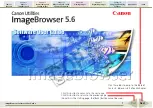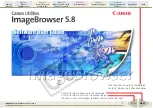
Concepts
12
RMS NetLinx Programmer’s Guide
Notification Process
As NetLinx sends parameter updates to the RMS server, the RMS server checks
to see if the parameter's threshold value has been reached. This comparison is
made by checking the previous value of the parameter against the threshold and
by checking the new version of the parameter against the threshold using the
threshold comparison operator. If the comparison for the old value is False and
the comparison for the new value is True, then the parameter triggers an Alert
message. If the comparison for the old value is True and the comparison for the
new value is False, then the parameter triggers an Advise message. Therefore an
Alert message is generated when a parameter reaches its threshold, and an
Advise message is generated when a parameter returns to its normal operating
range.
Alert Messages
When an Alert message occurs, the RMS server first checks to see if message
should be logged to the various log services. A message is created for each log
service using the Log Text of the parameter's Alert template, or the default
template if a custom template has not been assigned. Next, the RMS server
checks for any notifications in the Notification List matching the group, room,
and status type for the parameter and dispatch any messages via SMTP or SNPP
as needed using the appropriate text from the template assigned to the parameter.
Advise Messages
When an Advise message occurs, the RMS server first checks to see if the
parameter is configured for sending Advise messages. If not, no messages are
sent and no Log entries are created. If the parameter has been configured for
Advise messages, the message is logged and dispatched via SMTP an SNPP as
described above. However, the Advise template assigned to the parameter, or the
default Advise template if no template has been assigned to the parameter, is used
to generate the text for the log entries and messages.
For instance, if the previous value for Projector Lamp Hours is 999 and the new
value is 1001 and the threshold is set to 1000 and the threshold operator is set as
"Greater Than", the RMS server checks to see if the previous value compared to
the threshold, i.e. 999 is Greater than 1000 is False, has a different result than the
new value compared to the threshold, i.e. 1001 is Greater than 1000 is True. This
Содержание RMS 3.0
Страница 1: ...Software NetLinx Programmer s Guide RMS Resource Management Suite 3 0 ...
Страница 4: ......
Страница 10: ...Overview 2 RMS NetLinx Programmer s Guide ...
Страница 12: ...System Requirements 4 RMS NetLinx Programmer s Guide ...
Страница 22: ...Concepts 14 RMS NetLinx Programmer s Guide ...
Страница 62: ...Custom Device Monitoring Programming 54 RMS NetLinx Programmer s Guide ...
















































